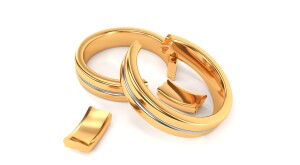By this point, you may think you know everything about what’s going on with your lady bits. But it never hurts to become a little more familiar, since shrinking estrogen levels can cause your vulva to become thinner and drier.
Because of my reproductive and sexual health knowledge, my friends and family will often ask for my insight about hygiene practices like “vajacials” and whether they help to restore vulvar moisture, or whether pubic hair oils actually prevent ingrown hairs. The truth is, keeping your vulva happy and healthy doesn’t have to be complicated. And maintaining a healthy vulva can prevent discomfort, irritation and even infection.
Consider these tips to take care down there. And talk to your health care provider if you have questions.
Understand your anatomy
The vulva is made up of your labia majora (your outer lips), your labia minora (the smaller inner lips) and the mons (the fatty hair-covered area above your pubic bone). Your vulva also includes your clitoris, urethral opening (where your urine comes out), your vaginal opening and your perineum (the area between your vagina and anus).
Use care when you wash — with technique and products
Avoid using harsh products or products that contain antibacterial ingredients since they can leave your skin feeling dry and irritated, and they can disrupt the balanced pH of your skin and vagina. (A quick note about vulva and vaginal infections: They can also be caused by hormonal changes, stress or illness.)
To wash your vulva, use your hands and a mild, unscented cleanser if necessary (as close to your vulvar pH of 5.3 to 5.6 as possible). Separate your labia and use the water to clean between your folds and around your clitoral hood. Avoid getting cleanser inside your vagina. Pat your vulva dry with a soft dry towel and don’t forget to clean your perineum and anus, too!
Ditch the exfoliating loofahs, washcloths and scented products since they may also cause vulvar burning, itching or irritation. And while you may be tempted to wash your “girly parts” more than once a day, know that overwashing your vulva can create more problems.
Limit chemicals
Chemicals in feminine hygiene products may disrupt your skin’s pH and cause odor, infection or an allergic reaction. For instance, a 2017 study of 54 personal hygiene wipes found that they contained more than 132 potential allergens, as reported in the journal Dermatitis.
People with sensitive skin also may want to avoid products that contain methylisothiazolinone (MI), which can be found in soaps and feminine washes. This chemical can cause contact dermatitis — a red, itchy rash — and can make your skin more sensitive.
Wear the right size undies
If you’re constantly tugging at them, or the seams are cutting into your thighs, throw the whole pair away! Ill-fitting undies can cause chaffing and skin irritation, confirms Jen Gunter, M.D., in her book, The Vagina Bible. Wondering if a well-fitting thong is OK? A report from the 2018 annual meeting of the American College of Obstetricians and Gynecologists notes that wearing thongs does not increase your risk for infection, contrary to popular opinion.
Consider your fabrics
The color, fit and function of underwear is really up to you, but reach for natural fabrics like cotton, which is lighter, breathable and improves air circulation. Avoid wearing panties made of plastic, latex or anything that causes you to sweat or traps moisture. And change out of sweaty exercise clothes or wet bathing suits as soon as possible since moisture and heat can break down your delicate skin and cause rashes, itching and redness.
Wash your undies carefully
Laundry detergents also can contain fragrances and chemicals, so consider a scent-free or dye-free option. Then, wash your underwear after each wear (and wash new underwear before first use), rinse it well and consider drying it on low for 30 minutes to help minimize new bacteria that it may have picked up in the wash.
Consider going commando when you sleep
You don’t need to cover things up all the time. Leaving your vulva open to the air while you slumber can help with vaginal and vulvar irritation.
Take care with hair removal
Hair on your vulva acts as a protective barrier to reduce friction and limit the spread of bacteria and other germs. Hair removal can cause a host of issues like ingrown hairs, rashes, abrasions or burns, depending on the method. For instance, a 2017 study in the JAMA Dermatology reported that 1 in 4 people experienced an injury related to pubic hair grooming, with lacerations (aka cuts) reported as the most common injury (61.2 percent), followed by burns (23.0 percent) and rashes (12.2 percent). (Note: Laser hair reduction uses heat to destroy hair follicles, but this technique doesn’t work as well on gray or white hair that has less pigment.)
There aren’t any medical or health reasons for you to remove your pubic hair, really. But if it’s your personal preference, be sure to consult a licensed expert for additional support and tips if you’ve had unwanted complications.

Chiara Ghigliazza










